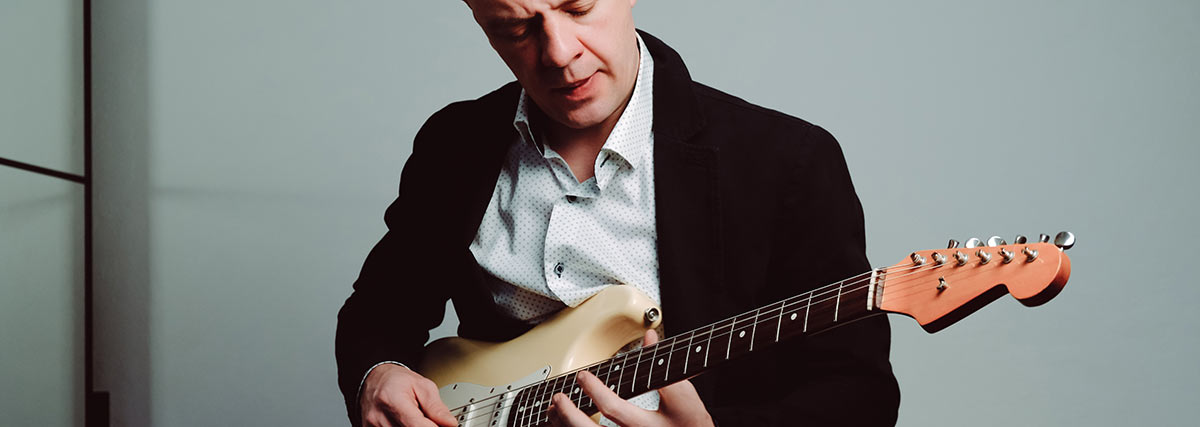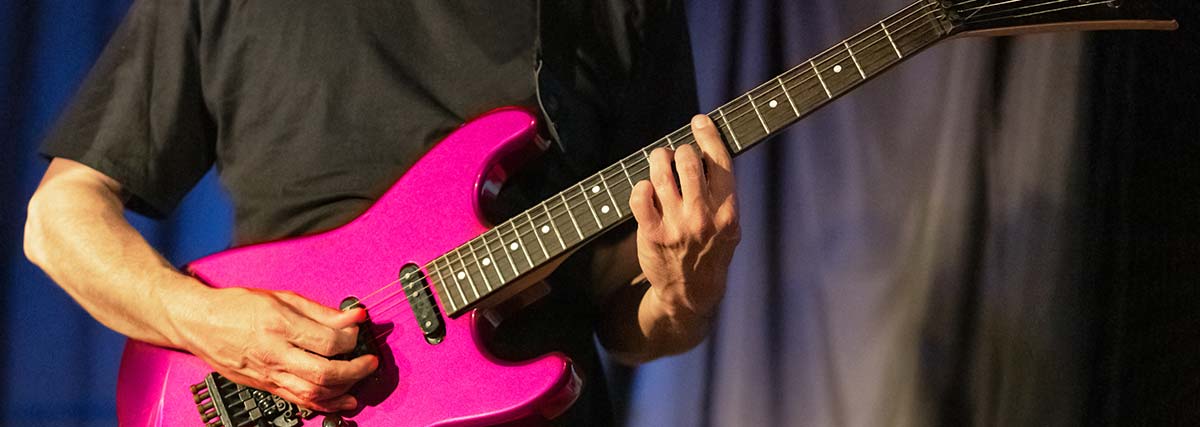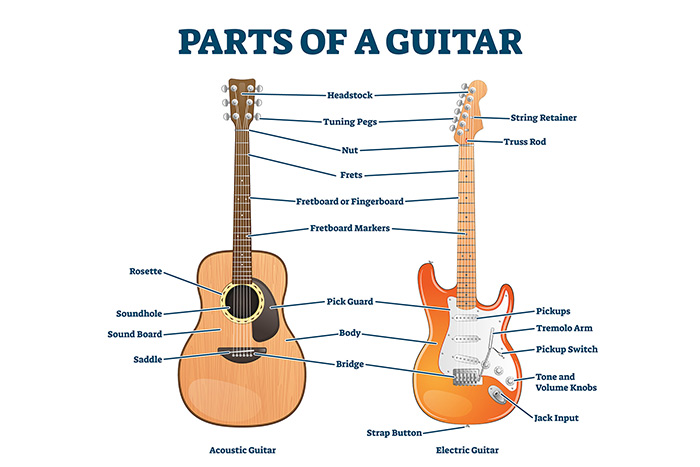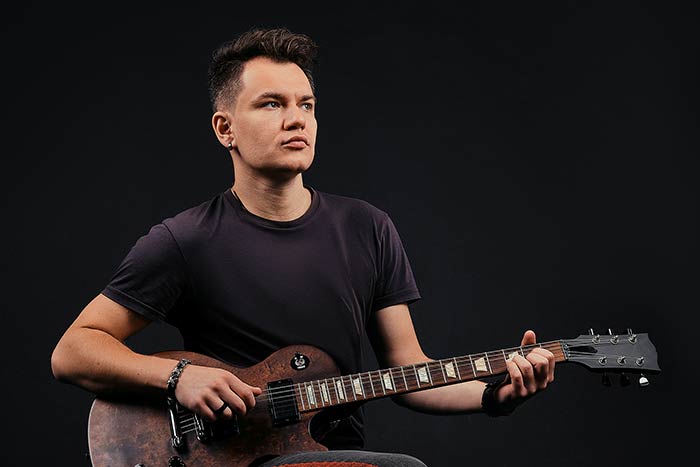The influence of Jimi Hendrix has been heard throughout all generations of guitarists since he burst onto the scene in 1967, even being heard today on some of the most popular songs of the past few years. Listeners of what is currently trending in the charts are regularly hearing Hendrix’s influence, even if they don’t realise it.
What is The Hendrix Playing Style?
Jimi Hendrix is considered a pioneer of the electric guitar. Before Hendrix became a household name in 1967 following his performance at the Monterey Pop Festival, the guitar was seen as a very different instrument. Previously it was viewed as more of a rhythm instrument, and although other emerging guitarists of the time such as Eric Clapton and George Harrison were starting to push the boundaries of what the guitar could do, Hendrix took this to a whole other level. It was not only his wild and innovative playing style that would incapsulate his audience, but his energetic and flamboyant stage presence where Hendrix used the guitar as an extension of himself to create sounds that had not yet been heard before.
Although his contemporaries were already starting to experiment with overdrive and distortion as effects to give the electric guitar a more aggressive grit to the tone, Hendrix pushed his amplifiers to the brim to bring them into a blissfully overdriven state, becoming a signature of his sound. He was very innovative for guitar tone overall, being an early adaptor of what are now seen as staple guitar effects of the modern day. Some of these effects included the wah wah pedal to give a vocal like quality to the sound, a uni-vibe pedal to simulate the sound of a Leslie speaker, and the Fuzz Face to push the natural amp overdrive into fuzzed up territory.
Not only was the use of all these effects very innovative but also too was his playing style. Before he was thrust into stardom, Hendrix had spent years developing his craft as a sideman for artists of the period such as Wilson Pickett, Sam Cooke and Curtis Knight, and also in his own bands on what was know as the chitlin’ circuit which was a string of venues through the US which would commonly host entertainers and musicians of African American decent. Accompanying himself as the only guitarist, Jimi would be required to combine both his rhythm and lead playing together in the same phrase whilst simultaneously singing, or playing licks on the guitar in-between vocal phrases. This was again something that Hendrix would have heard from his contemporaries of the time, which was common in RnB and soul music of the period.
People had not heard it to the extent that Hendrix took it too however, with the technique of combining rhythm and lead being heard throughout “Hey Joe”, which would be the Jimi Hendrix Experience’s debut single that would launch them onto the UK scene. This technique combines fractions of common triads with other more RnB elements such as hammer-ons and pull-offs to other notes in the scale to create short and simple melodic ideas, which give a more embellished and busier version of the chord. This approach is particularly useful in a trio setting where there is no second rhythm instrument (guitar, bass, drums), because it can fill in the gaps around a more static drums and bass relationship and create embellishments to excite the listener.
This technique of combining rhythm and lead was particularly useful in the verses and choruses of songs where Hendrix is singing over the top, but if this is Jimi Hendrix that we’re talking about then you can bet that there’s going to be a guitar solo in there somewhere! Hendrix put his own twist on traditional blues phrases heard by all of the greats such as Howlin’ Wolf, B.B. King and Albert King, giving an exciting new take on this familiar blues sound. Most of these licks would follow the pentatonic and blues scales like all the greats, although Hendrix would give more bends, slides, hammer-ons and pull-offs giving more movement to the improvisation. Traditional blues playing is all about simple motif-based phrases that one could sing back after hearing it. Hendrix’s solos still possessed this quality, while giving it an exciting and fast personality that had not yet been heard at the time.
Who Has This Influenced?
Many cite Hendrix as a player who was ahead of his time and wasn’t quite fully understood when he was still around. This is perhaps why many guitarists of the generations to follow have been heavily influenced by him, and why genres of music have been created from his influence. One guitarist that was also incredibly influenced in the electric guitar world, and another that is sadly no longer with us was the late great Stevie Ray Vaughn (SRV). Stevie also had a blues-based style, but mixed it with modern rock elements of the time to play similar blues phrasing from the greats that had also influenced Hendrix.
If people thought Hendrix’s playing was fast, they had no idea what SRV would bring to the table! Although Stevie was heavily influenced by Hendrix, he certainly wasn’t out to copy him. You can definitely hear the influence in his style while also having a very distinct sound of his own. SRV shows this through covering two of Hendrix’s most well-known songs, “Little Wing” and “Voodoo Child (Slight Return)”. Stevie starts off “Voodoo Child (Slight Return)” very similar to Hendrix’s version to pay homage to his influence and keeps to the motif of the song as he starts his improvisations, slowly allowing himself to creep into more of his go-to SRV-type vocabulary as the jam progresses. He takes a similar approach in “Little Wing” playing the intro in a similar manner to the original, but then keeping the rest of the track instrumental so that he can explore his improvisations and find the balance between Hendrix-style and SRV-style guitar licks.
A more modern artist that may be more familiar to those of the current day and age who aren’t guitarists themselves is John Mayer, who has taken influence from both Hendrix and SRV and put these sounds into a more modern pop context. The influence of these greats is heard throughout Mayer’s music, even to the point of him covering “Bold As Love” from the Jimi Hendrix Experiences’s second studio album. Hendrix’s unique approach to combining rhythm and lead playing is something that Mayer displays a lot in his music, being heard throughout his song “Gravity” from his popular 2006 album Continuum, which combines pop with more old school RnB and soul. “Gravity” currently (as of January 2022) has 276M streams on Spotify making it the third most popular song on the 12-track Grammy winning album.
An artists who has been incredibly relevant over the past decade, and is arguably one of the most popular artists of recent times is Ed Sheeran. Not only is Sheeran an accomplished singer and songwriter, but guitarist as well. Some of his songs are more guitar driven than others, and like John Mayer often blends many different styles into his catalogue. Hendrix’s influence can be heard on his track “Thinking Out Loud” from his 2014 album X, in both the form of rhythm and lead playing.
Throughout the verses and choruses Sheeran plays a relatively simple chord progression (D, D/F#, G, A) while adding in a Hendrix-style double stop lick at the end of each round of the chords. This is a very effective place to put the lick since there is a natural pause in the picking pattern here, so this adds some excitement. Once the solo hits in the back end of the tune we hear Sheeran take a blues/pentatonic based approach to the solo, using many of Hendrix’s double stop style licks around other common blues phrasing. This song has almost 2 billion streams on Spotify (as of January 2022) currently making it #14 on Spotify’s all time most streamed songs. Ed also takes out the #1 and #12 slots with his songs “Shape Of You” and “Perfect”, meaning Jimi’s influence has been heard by many.
How is This Relevant to Modern Pop Music?
People are often quick to assume these days that the guitar is not as relevant as it used to be in the world of popular music. Although popular music has perhaps made a shift away from guitar based music where the guitar is one of the main instruments that are featured in the song, it certainly hasn’t gone anywhere. Guitars are often present although not as noticeable in many pop songs of the past decade, taking a backseat as an additional colour but no longer the feature. Often the guitar (acoustic or electric) will start off a song, to allow other percussive and production elements to build around it as the song moves towards the chorus or a second verse. This is heard on many of Ed Sheeran’s biggest songs such as “Thinking Out Loud” (1.9B streams), meaning Hendrix’s rhythm and lead playing influence is being heard by many listeners who probably have no idea where this influence originated from! Although this may be the case, many listeners of the modern day have heard Jimi Hendrix’s influence on the radio, Spotify, and anywhere else they hear their music!
Tags: Electric guitar, Guitar wisdom, Learning guitar FAQ











